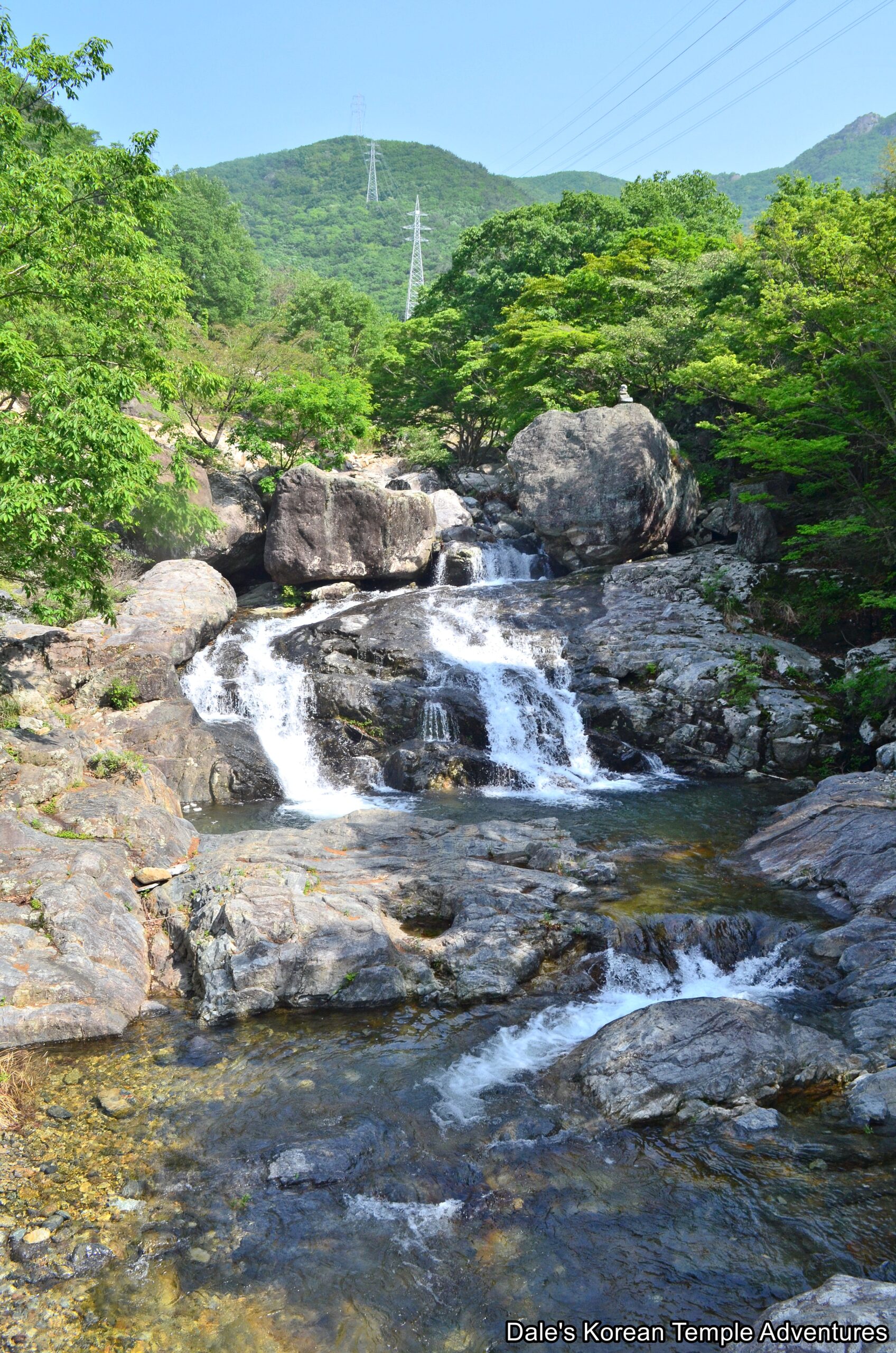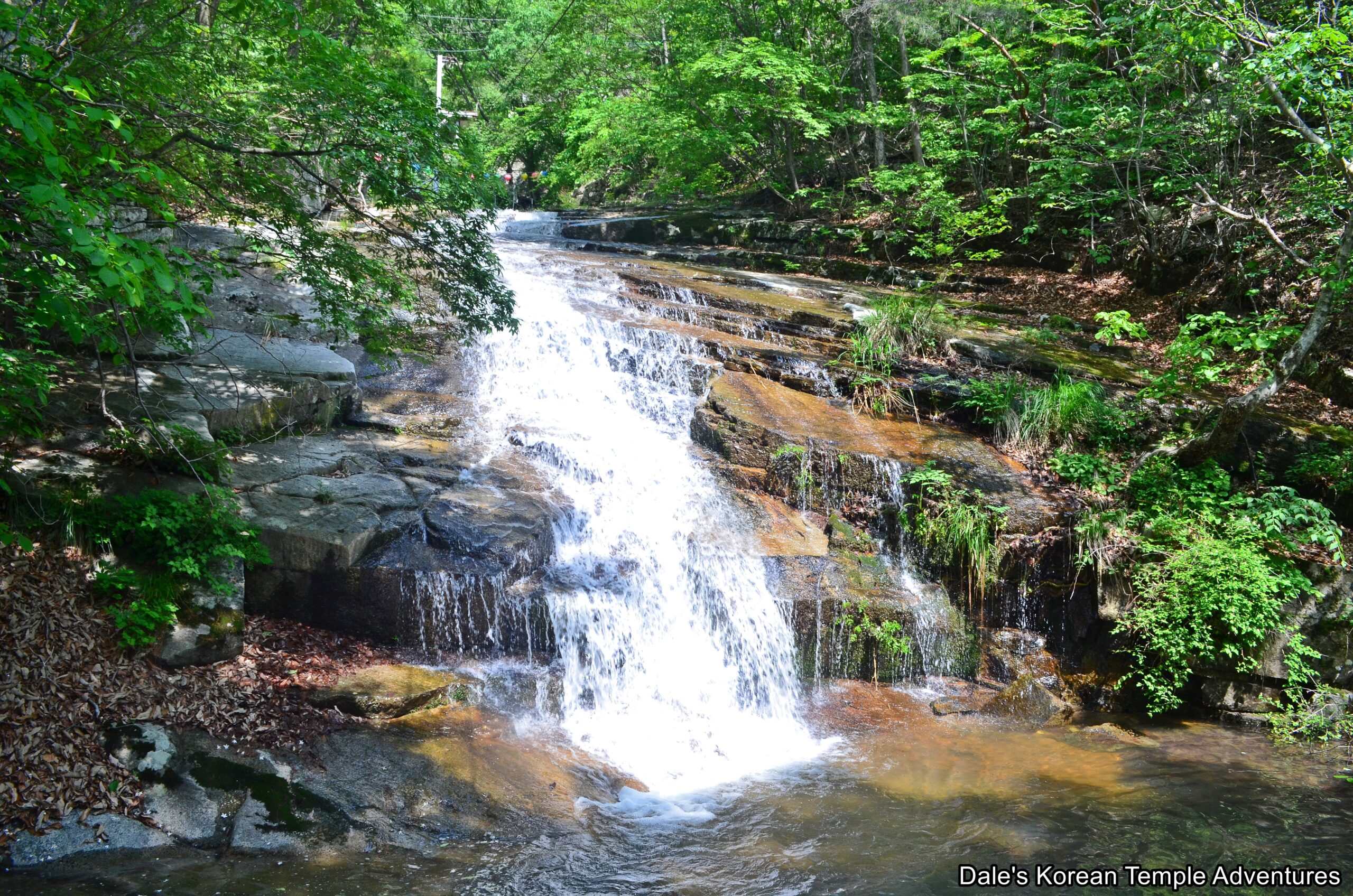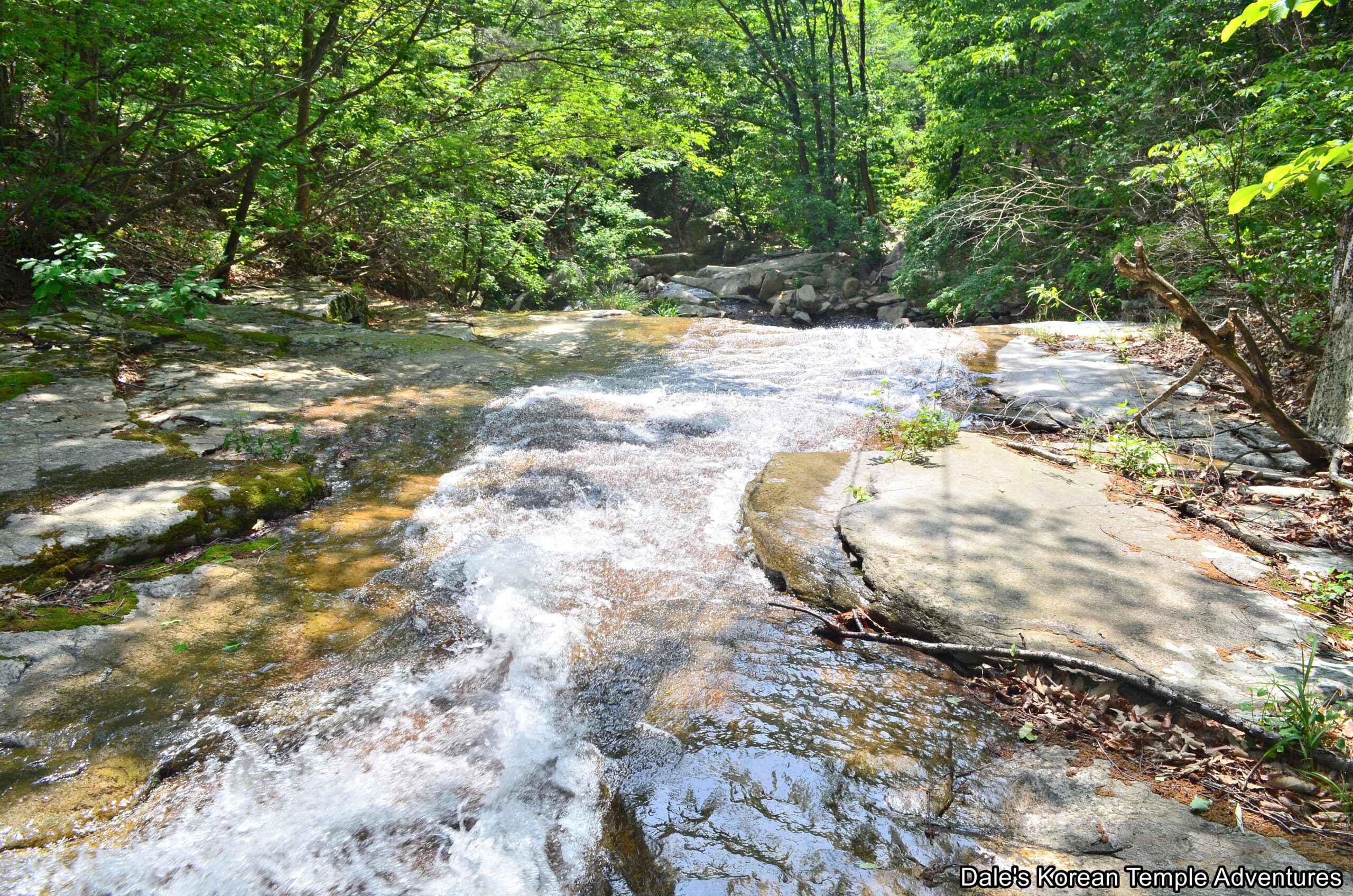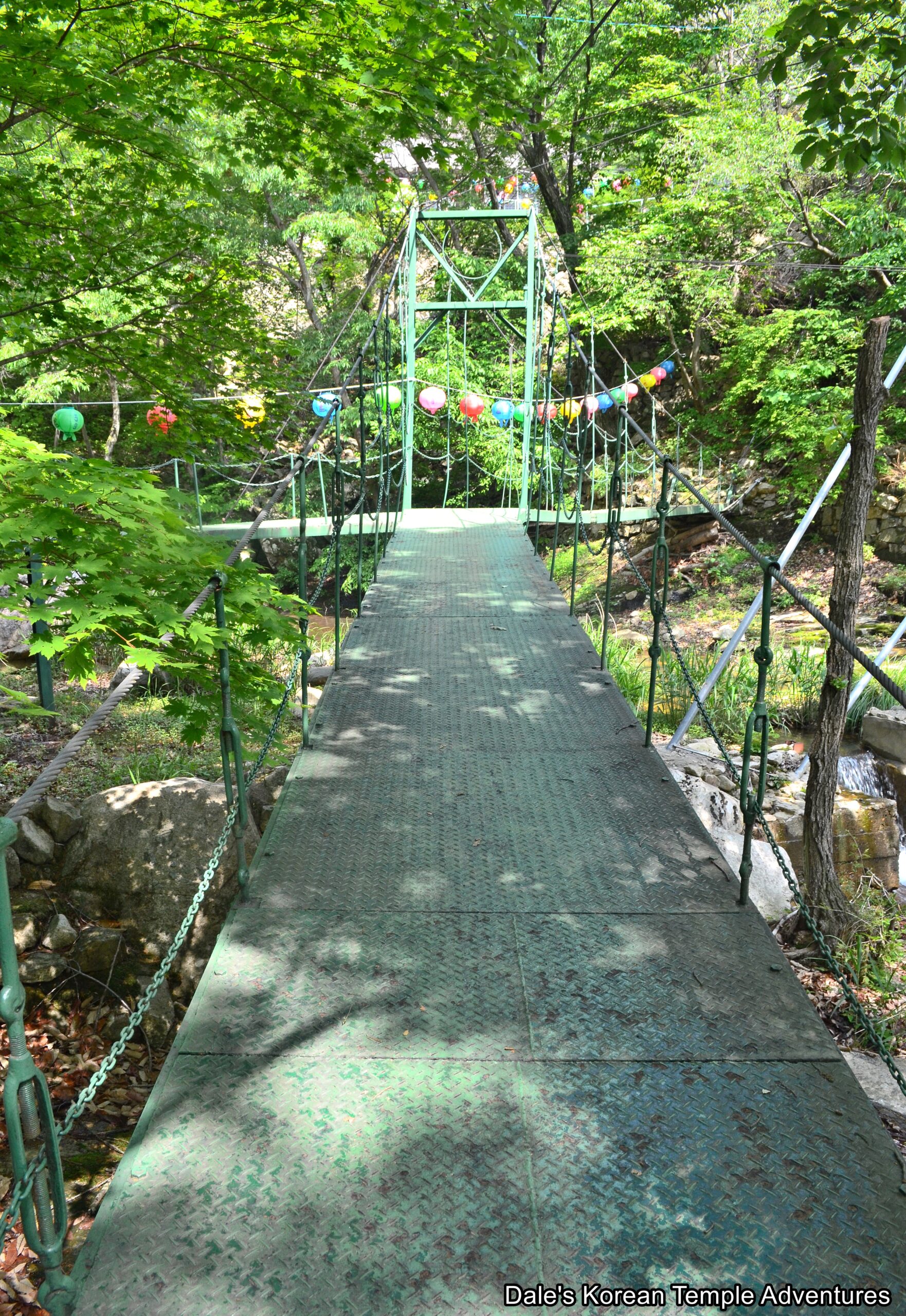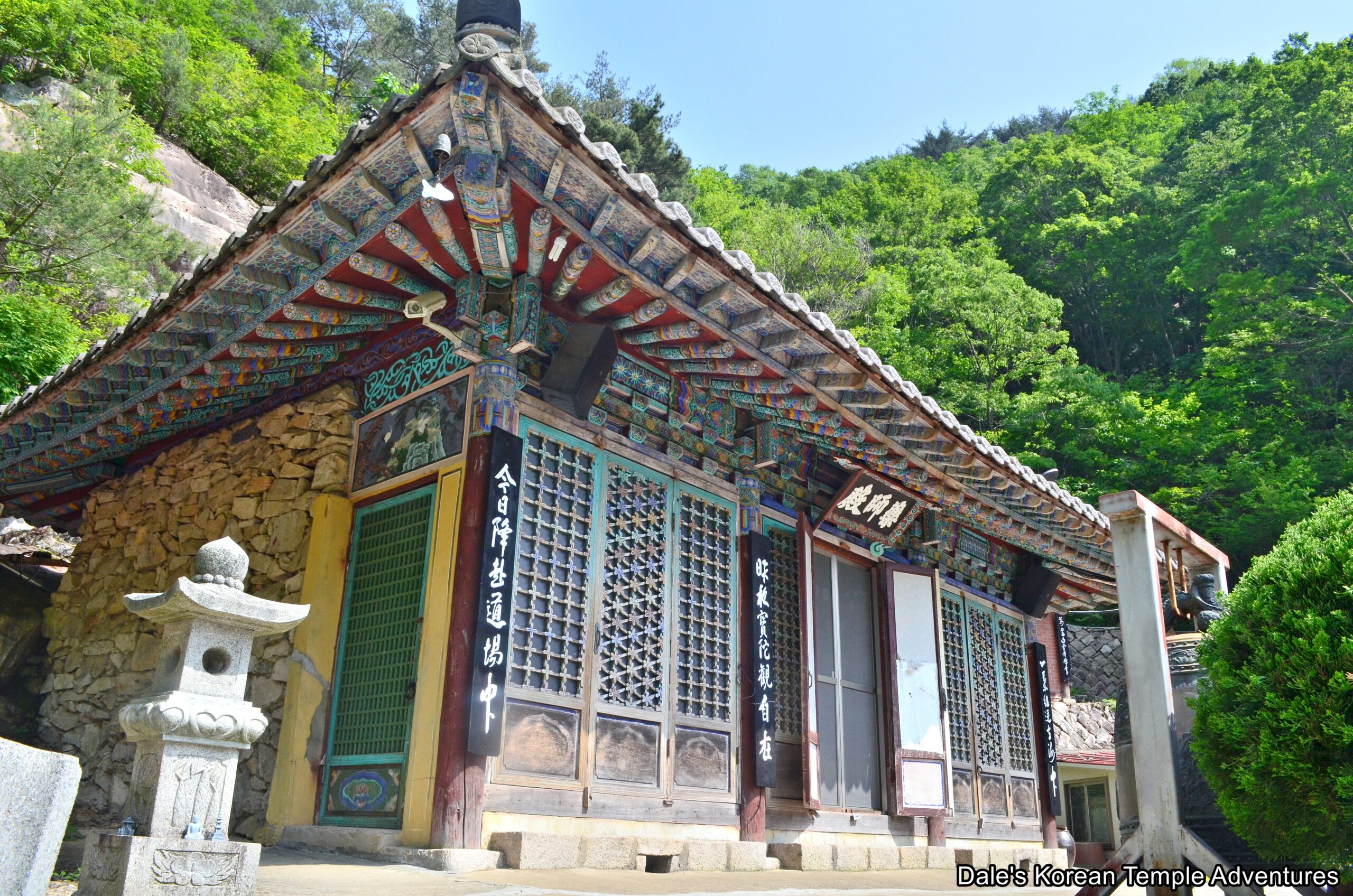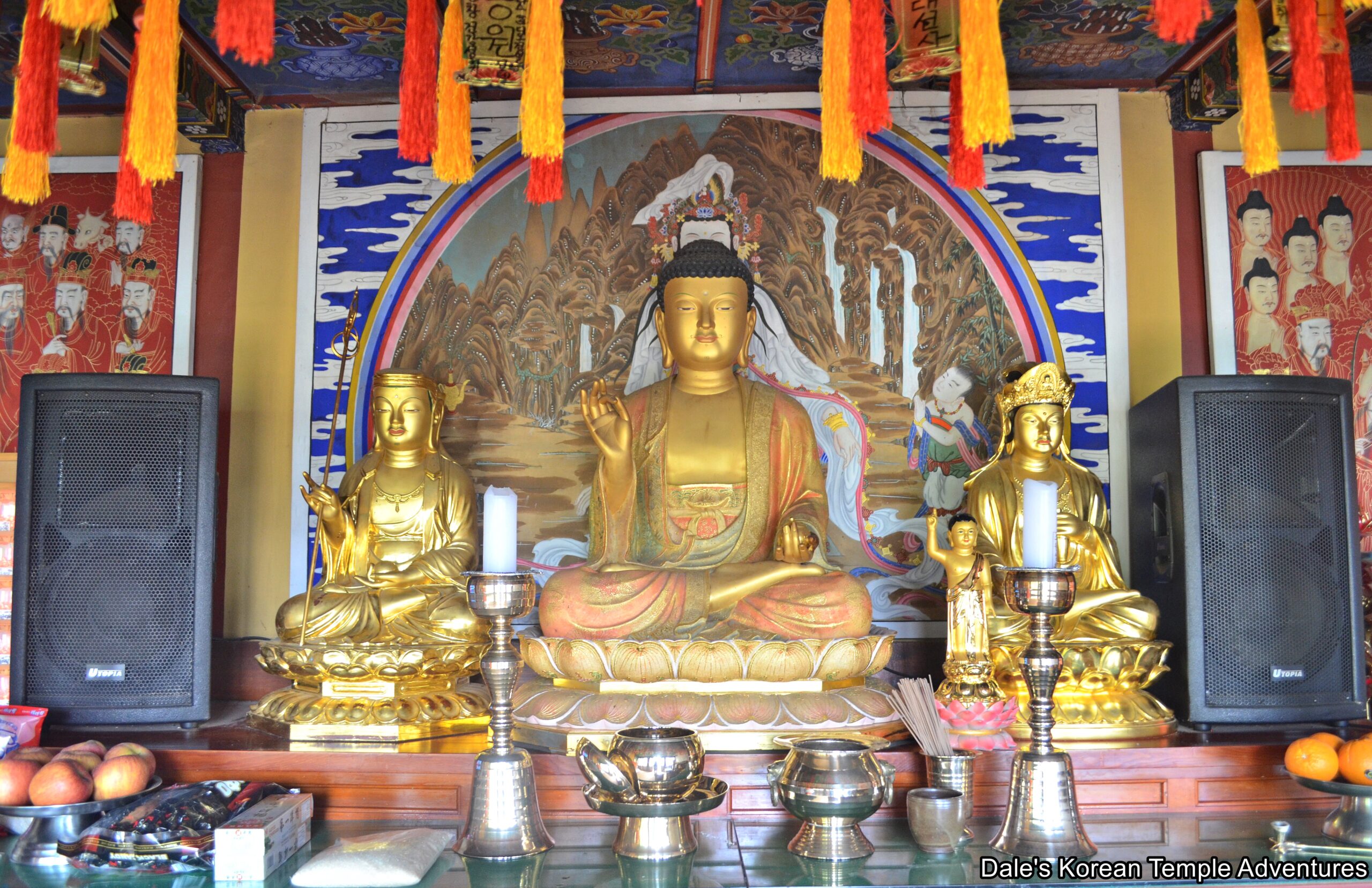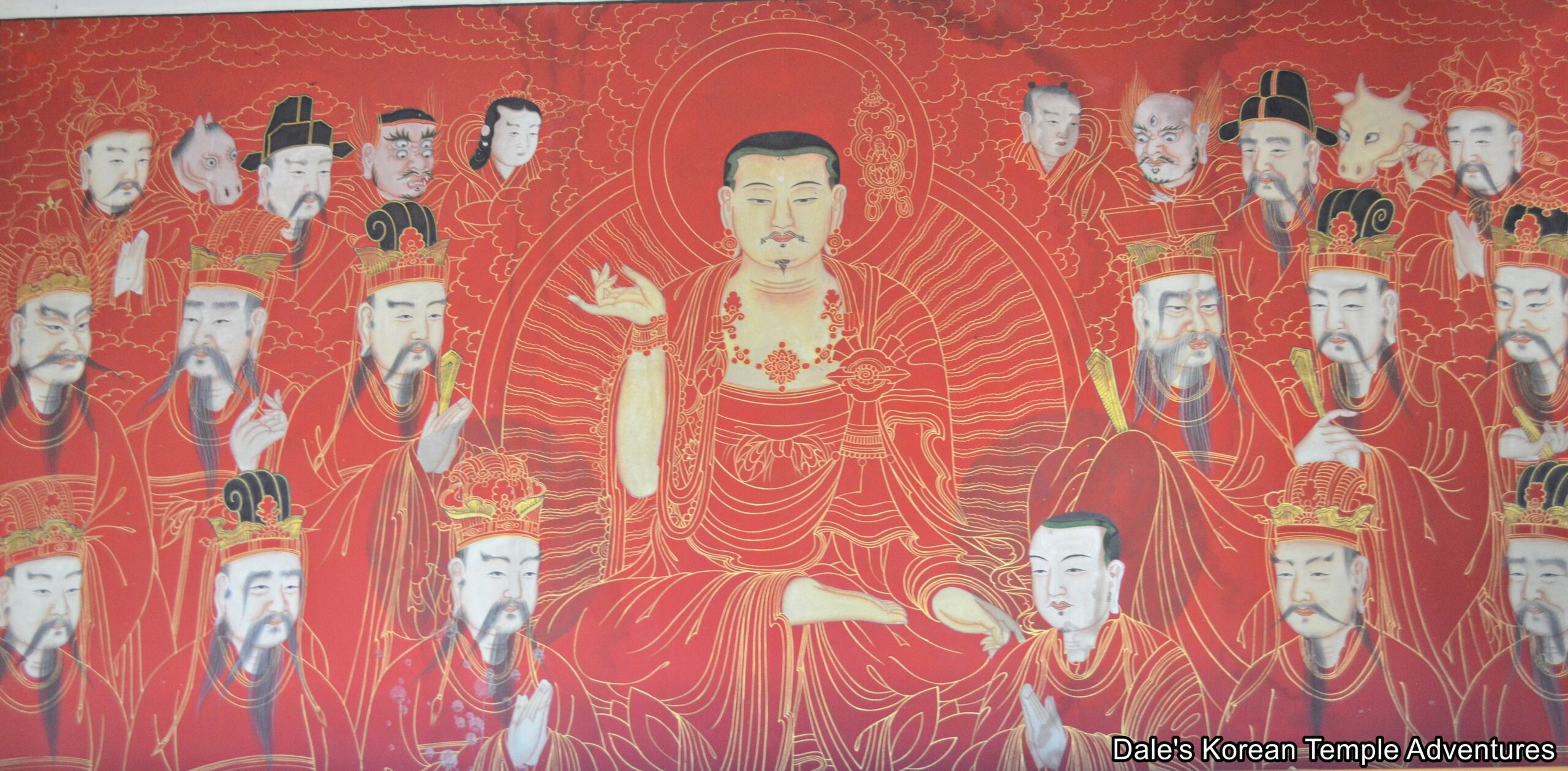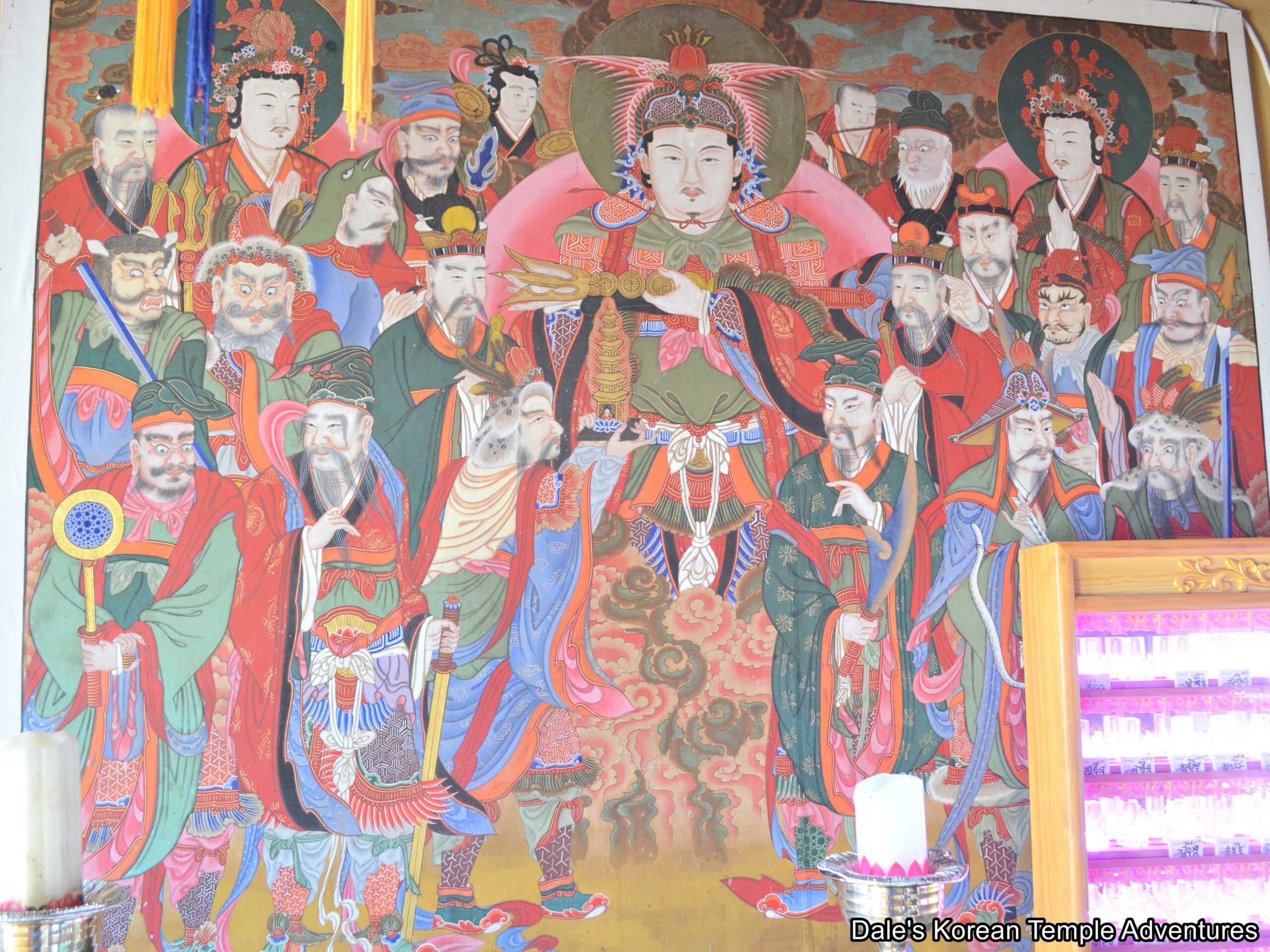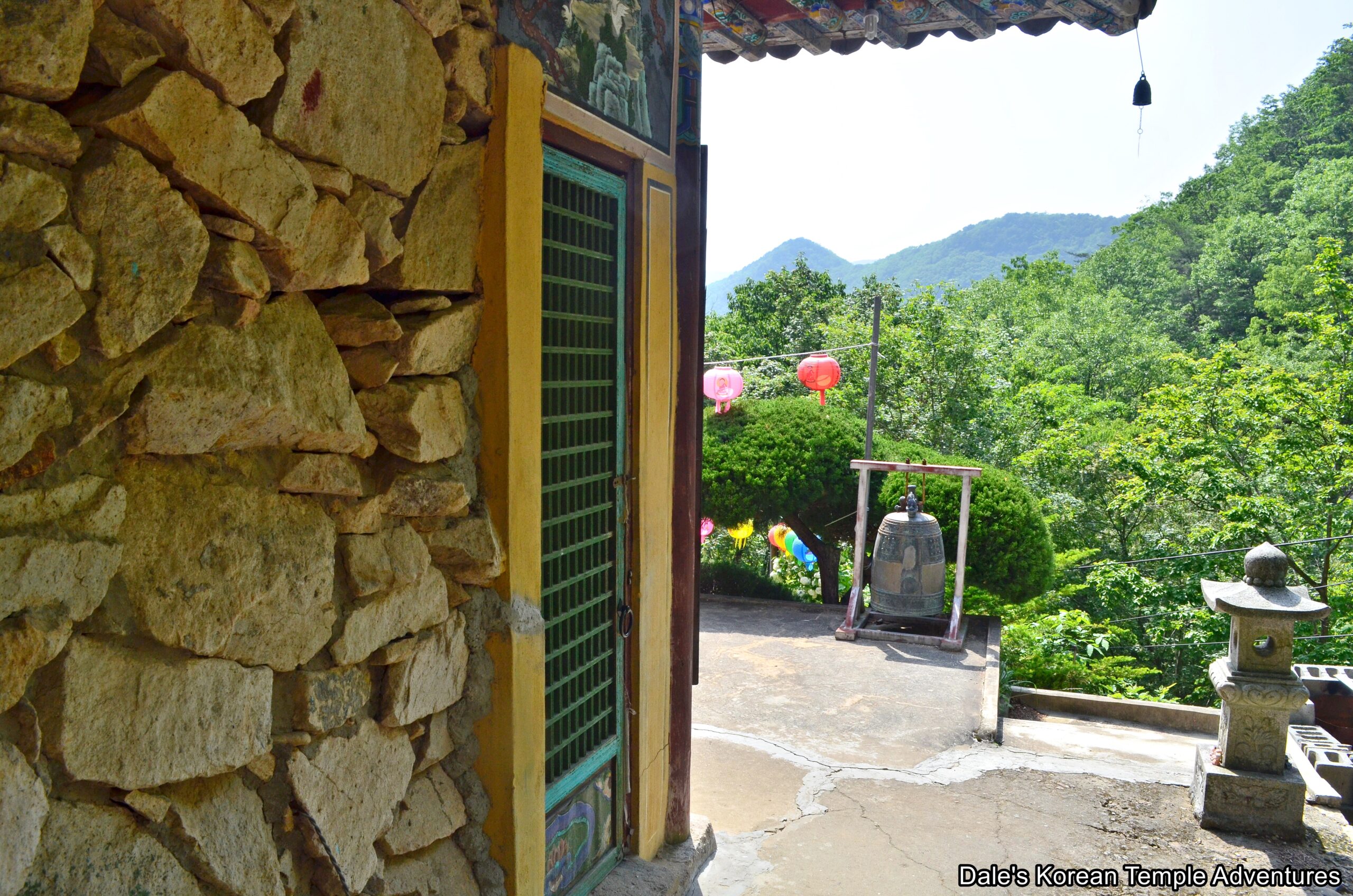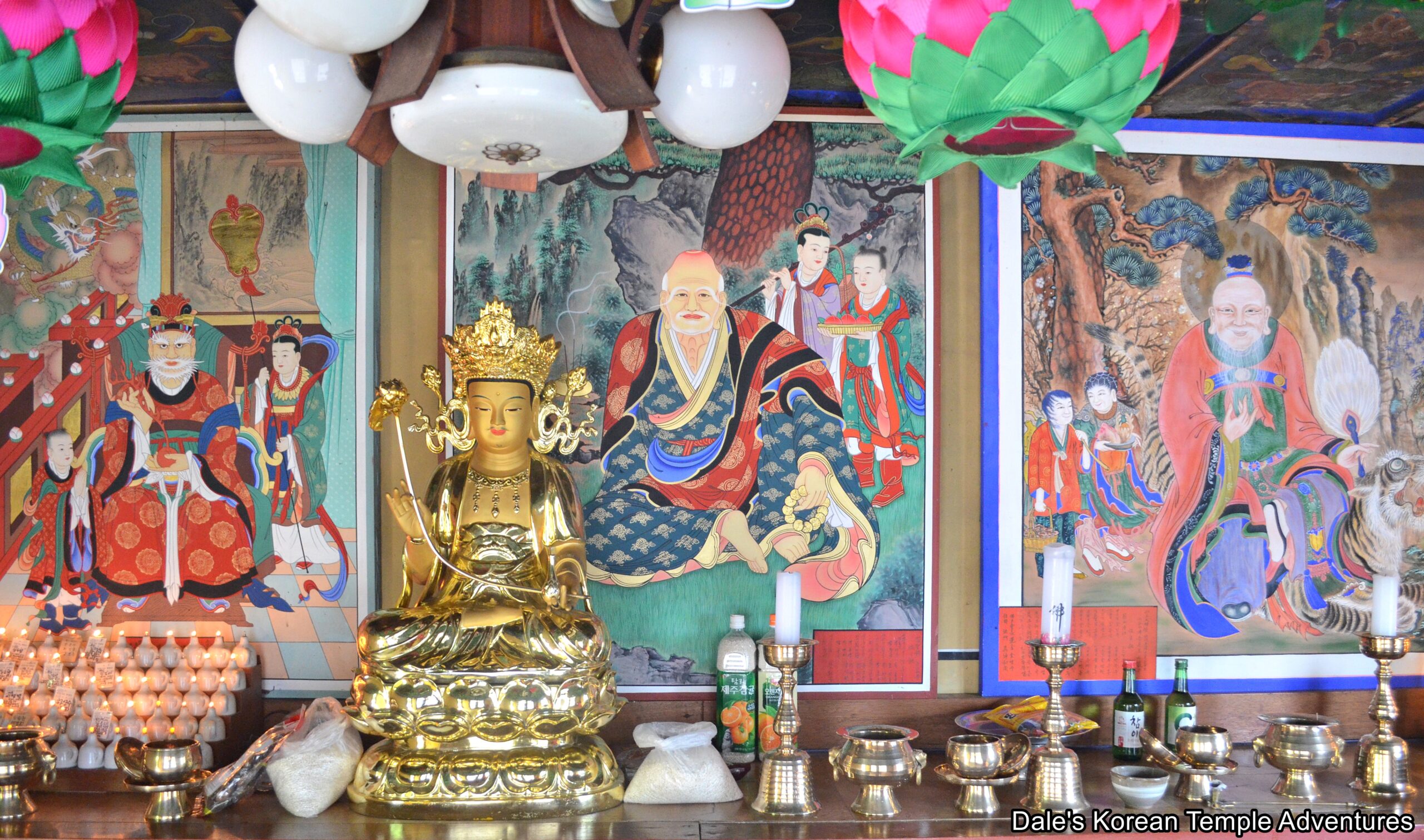Suamsa Temple – 수암사 (Yangsan, Gyeongsangnam-do)
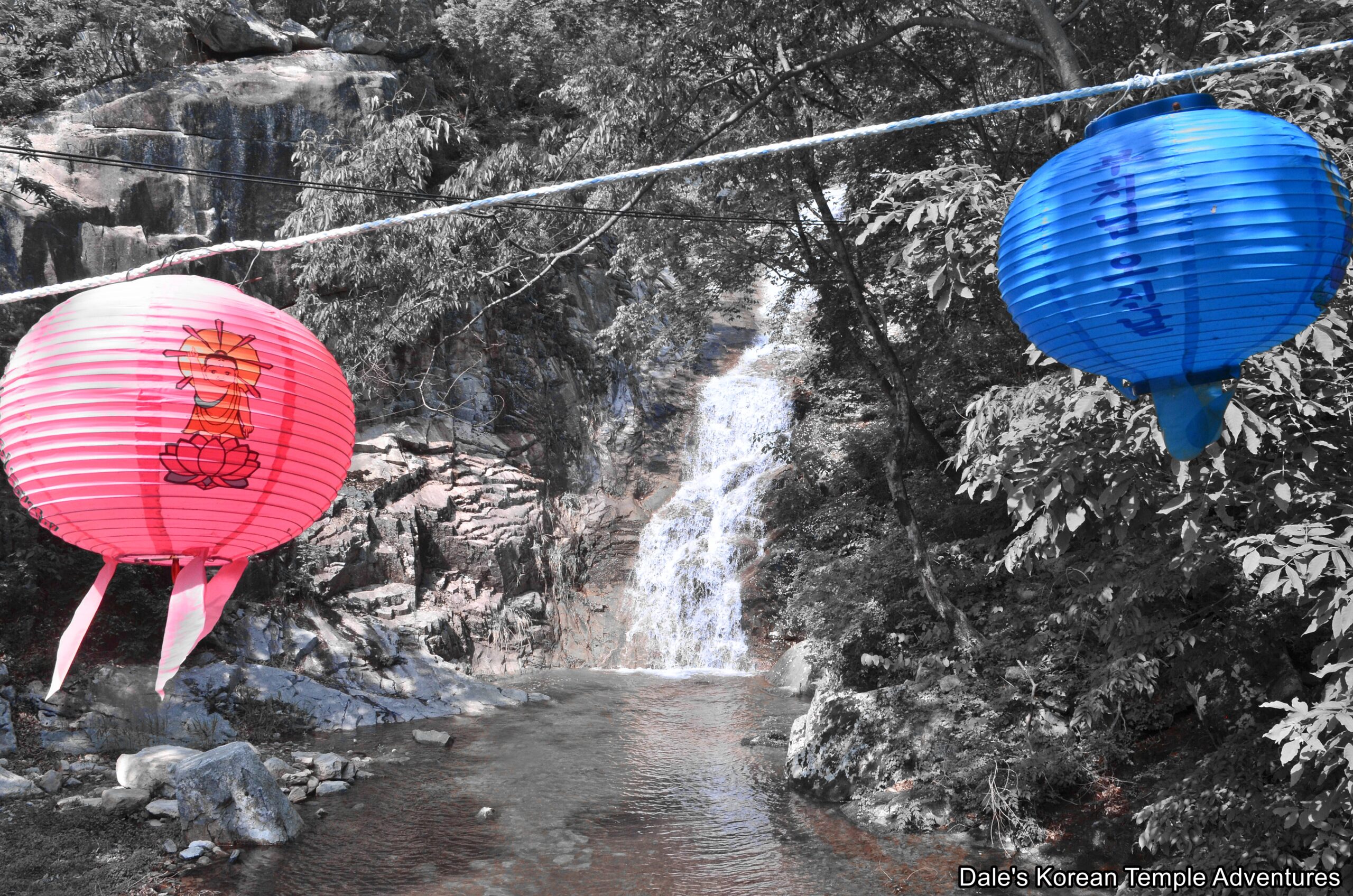
Temple History
Suamsa Temple is located in western Yangsan, Gyeongsangnam-do in the northern foothills of Mt. Togoksan (855.3 m). Located up a long valley, Suamsa Temple is situated next to the beautiful Buleum-pokpo Falls. Purportedly, Doseon-guksa (826-898 A.D.) first built the temple over a thousand years ago. About a hundred years ago, both Yaksayeorae-bul (The Medicine Buddha, and the Buddha of the Eastern Paradise) and Sanshin (The Mountain Spirit) appeared in the dream of a local village elder. This elder decided to build a temple next to a waterfall below Mt. Togoksan. More recently, Suamsa Temple was rebuilt about fifty years ago replacing a hermitage that was formerly on the site.
Temple Layout
You first make your way towards Suamsa Temple up a long valley. The valley stretches some four kilometres in length. And at the end of this valley is Suamsa Temple. Along the way, you’ll pass by several smaller rapids cascading over jagged rocks. A short trek up a set of uneven stone stairs will bring you to the beautiful Buleum-pokpo Falls. Amazingly, this waterfall is almost unknown. Hongryong-pokpo Falls located at Hongryongsa Temple in Yangsan, as well, is much more famous. There are several great angles to enjoy the falls, but it’s a bit difficult to get to the base of the falls, as there are no stairs that give you immediate access to Buleum-pokpo Falls.
Walking across the Y-shaped green metal bridge, you’ll need to walk a bit further up the mountain trail to get to Suamsa Temple. But to keep you company along the way are the beautiful falls to your left through the forest.
Finally stepping into the temple grounds, you’ll notice the monks’ dorms, kitchen, and administrative office to your far right. Perched to the left is the Geukrak-jeon Hall. Uniquely, the exterior to the main hall consists of stone walls. Stepping inside the Geukrak-jeon Hall, you’ll notice a triad of statues resting on the main altar. In the centre is Amita-bul (The Buddha of the Western Paradise). This statue is joined on either side by Gwanseeum-bosal (The Bodhisattva of Compassion) and Jijang-bosal (The Bodhisattva of the Afterlife). All three main altar statues are backed by a beautiful white image of Gwanseeum-bosal. To the right of the main altar is a painting dedicated to Chilseong (The Seven Stars), while to the left are two additional paintings. One of these paintings is dedicated to Jijang-bosal, while the other is a Shinjung Taenghwa (Guardian Mural).
The other shrine hall that visitors can explore at Suamsa Temple is the Samseong-gak Hall, which is slightly elevated and to the right of the Geukrak-jeon Hall. This shaman shrine hall is made of brick. When you first step inside this shrine hall, you’ll instantly notice that the main altar is slightly different than other temples. Instead of housing the more traditional images of Chilseong (who is usually centrally located), and joined by images of Sanshin (The Mountain Spirit) and Dokseong (The Lonely Saint) on either side, Suamsa Temple’s Samseong-gak Hall has a little different configuration. At Suamsa Temple, a painting of Dokseong is hung in the centre, while to the right hangs an image of Sanshin and to the left a painting of Yongwang (The Dragon King).
How To Get There
Outside of owning a car, the only way to get to Suamsa Temple is by taxi. You can get a taxi from the Jeungsan subway station, line 2, stop #240. The taxi ride should take about 35 minutes and cost you 30,000 won (one way).
Overall Rating: 7/10
Suamsa Temple is a little known temple in Yangsan, Gyeongsangnam-do. However, the temple’s natural beauty is nearly unsurpassed by other temples in Korea. Buleum-pokpo Falls majestically flows next to the temple. As for the temple itself, it has a few highlights like the murals inside the Samseong-gak Hall, as well as the stony exterior of the main hall.
